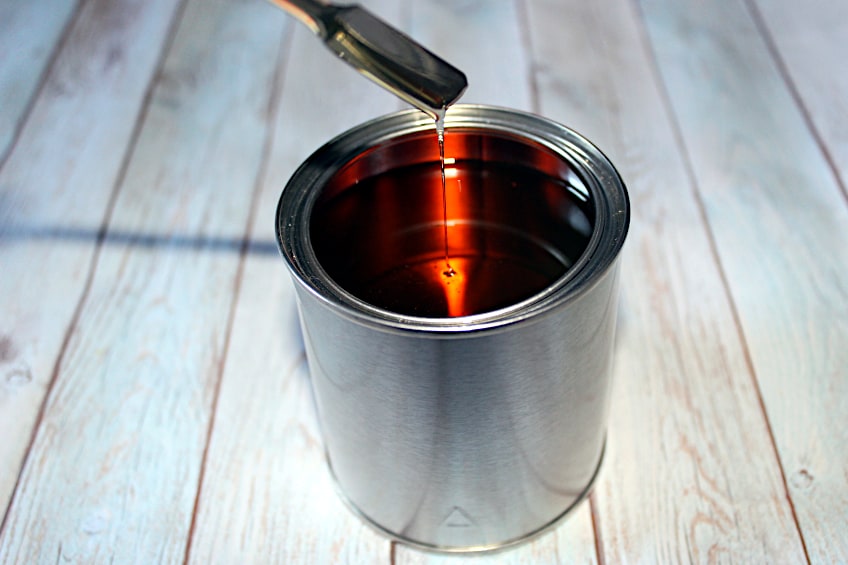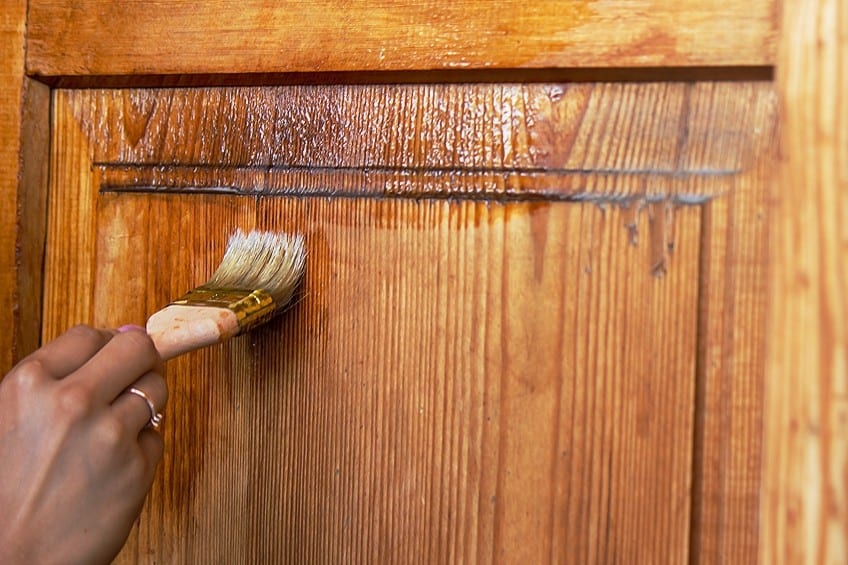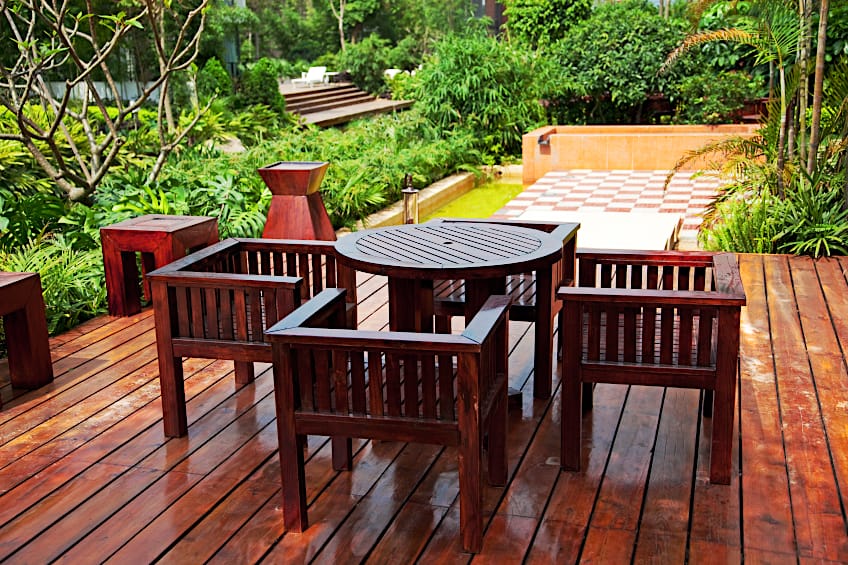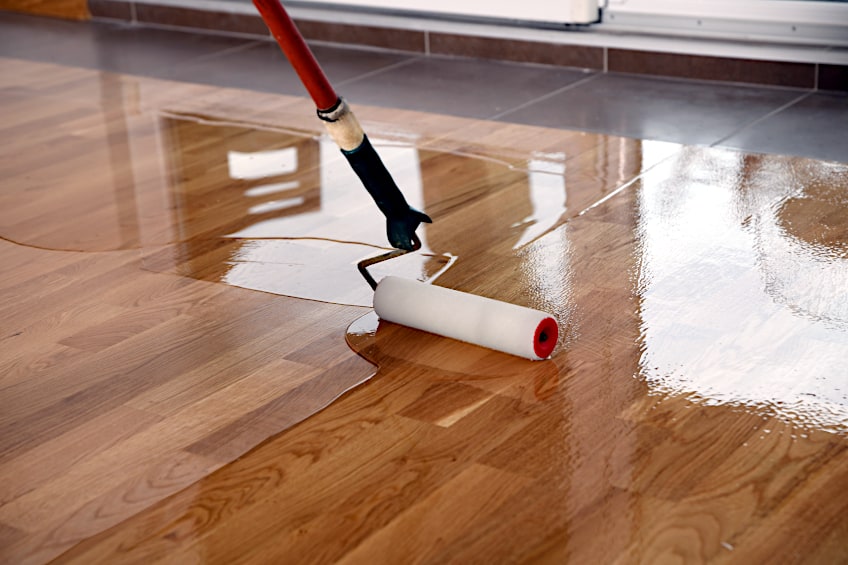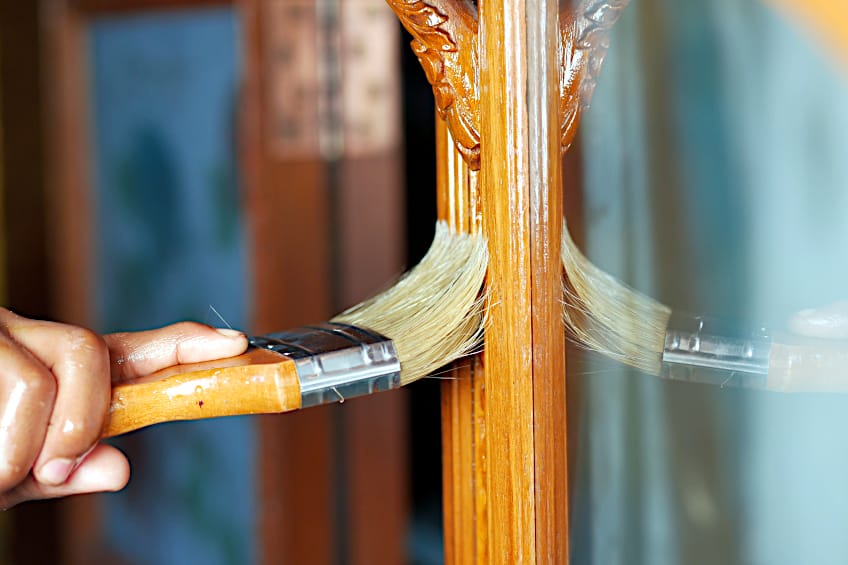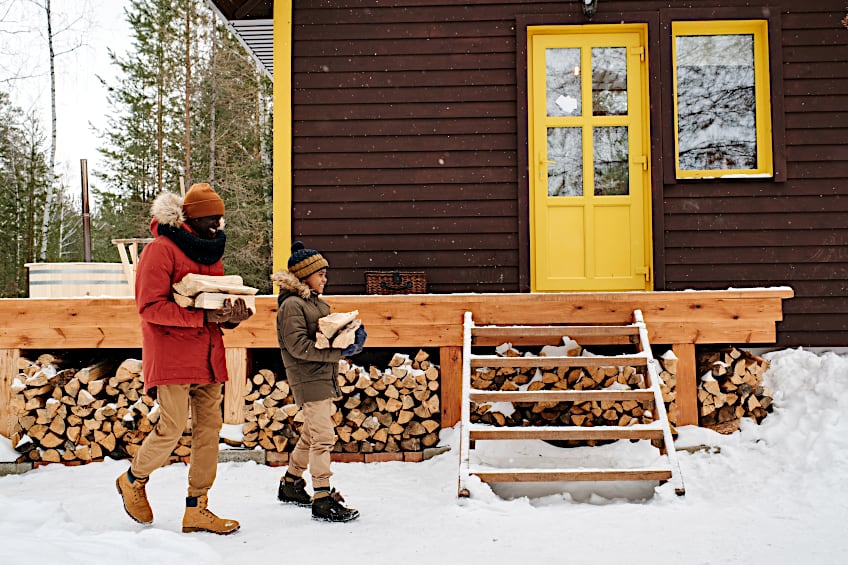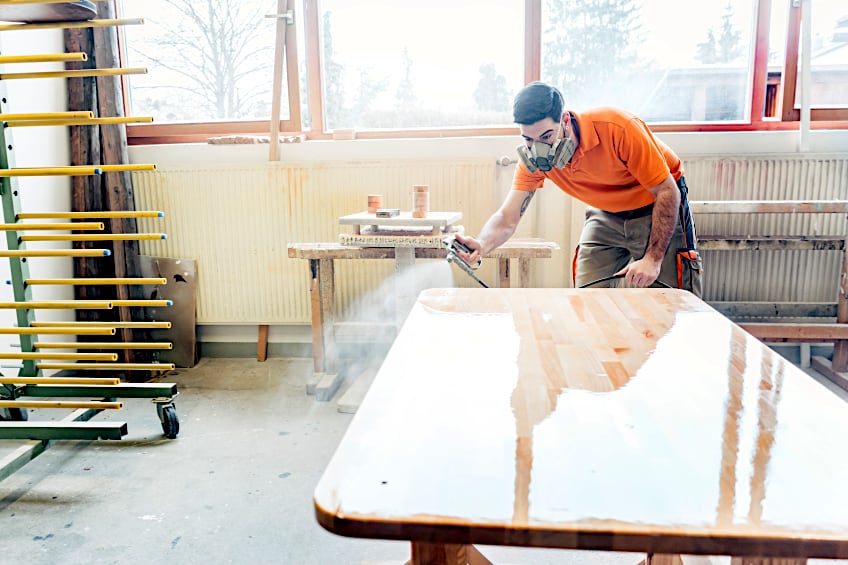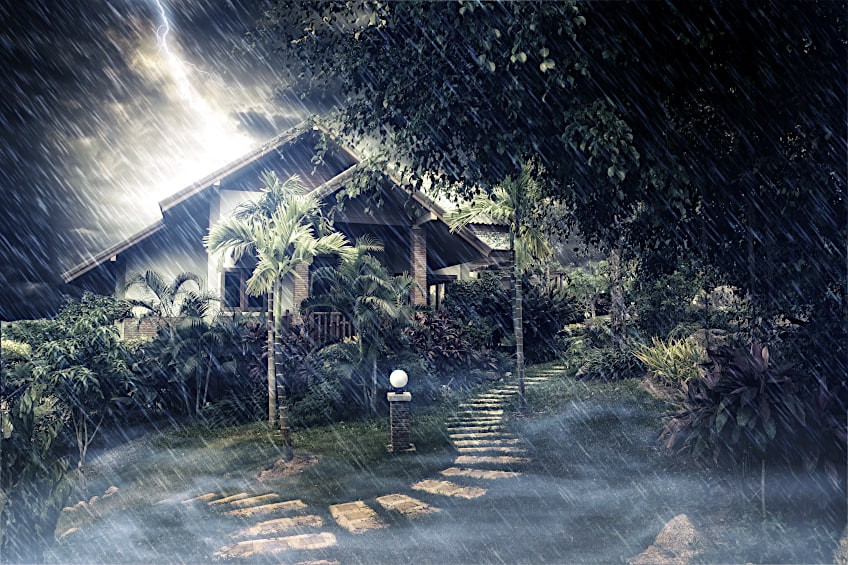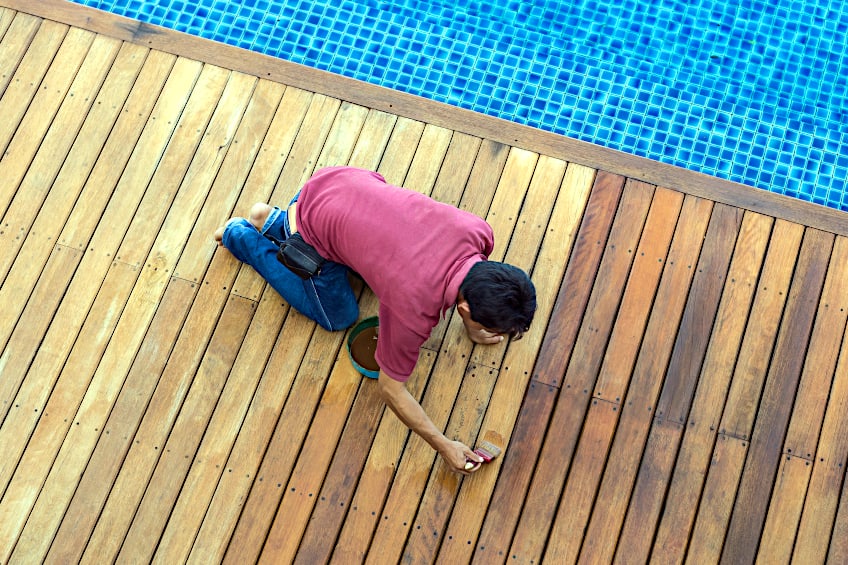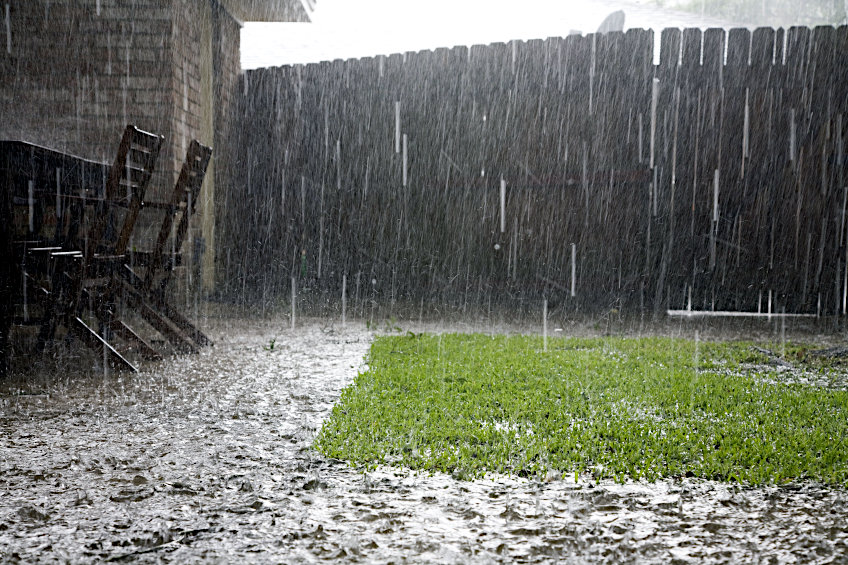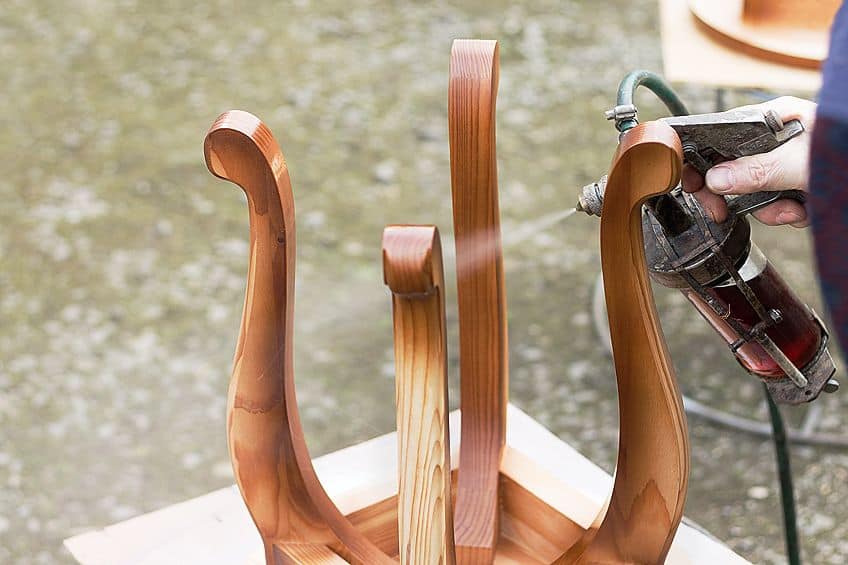Spar Urethane vs. Polyurethane – Know Which Urethane to Use
This post may contain affiliate links. We may earn a small commission from purchases made through them, at no additional cost to you. You help to support resin-expert.com
While there are many cutting edge coatings to choose from these days polyurethane and spar urethane remain the most popular. The spar urethane vs. polyurethane debate Is a lengthy one that has been going on since the inception of these coatings, but which one is ultimately the best? Let’s have a look at the spar urethane vs. polyurethane debate, and see if we can determine which one is objectively better for your next workpiece.
Table of Contents
Types of Urethane Coatings
There are many types of urethane variations for you to choose from. Two of the most popular of these urethane types are spar urethane and polyurethane, but what are they exactly? Let’s have a look at what spar urethane and polyurethane are respectively, what some of the pros and cons associated with them are, what they are used for in everyday life, as well as the difference between spar urethane and polyurethane.
What Is Spar Urethane?
Spar urethane is a heavy-duty resin variation that is used in a number of applications. What is spar urethane though? Primarily, it contains solvents, resins, and oils that allow it to create a self-leveling surface coating capable of sealing and protecting practically any surface it is applied to.
Spar urethane is available in two commonly used variations, which are oil-based spar urethane and water-based spar urethane.
What does spar urethane look like? When initially applied spar urethane generally looks clear, allowing you to see the surface of the substrate you have coated, but depending on the additives and resin present in the composition spar urethane can also appear to have a yellowish tint to it. This is the primary visual difference between spar urethane and polyurethane.
Originally, spar urethane was used to protect the spars of ships, which are the long, load-bearing poles that sail and cables are attached.
Spar urethane does a particularly good job in this application, preventing UV light, wind, sand, and saltwater from damaging the surface of spars.
Wooden spars on old boats took quite a bit of damage from external forces. Aside from the aforementioned water, wind, and UV light, spars can also experience extreme cold and extreme heat which cause the wood to expand and contract.
Spar urethane is capable of expanding and contracting along with spars to ensure they are constantly protected.
Spar urethane is also available in different textures and colors. It can be found in high-sheen and low-sheen variations, smooth and rough-drying textures, and can even be found in varying tint intensities. This has made spar urethane an incredibly popular tool in shipbuilding and other outdoor wood-crafting trades over the years.
- Suitable for interior and exterior surfaces
- Resistant to extreme external forces (rain, wind, snow, sunlight, UV rays, impact, abrasion)
- Contains elements that prevent UV light from penetrating the surface
- Capable of expanding and contracting with substrates
- Can be applied with a brush, roller, and/or sprayer if needed
- Incredibly durable and versatile
- Available in various textures and tint intensities
- Oil-based variations are not good for the environment and contain volatile organic chemicals
- Oil-based variations are highly flammable
- Oil-based variations can take a long time to dry
- Can be challenging to apply for beginners
- Quality can vary according to brand and price range
Applications of Spar Urethane
There are many places both in the home and outdoors where spar urethane can be used. Most of these applications require a hard-wearing surface coating to ensure the surface isn’t damaged over time, whether it be from external forces or foot traffic. Here are a few things you can use spar urethane for and where you can find it being used in everyday life.
Doors
If you have exterior doors that have to face the wind, rain, and sunshine regularly then you’d do well to coat (at least the front-facing half) with some spar urethane. Not only will this ensure that the surface is protected from the elements, but it will also provide the exterior door with a fresh sheen that’s sure to add to the overall curb appeal of your home.
Spar urethane can easily be applied to wooden doors. If you have a set of doors to coat and don’t have an awful lot of time to devote to the application process, keep in mind the spar urethane can be applied using a sprayer too. This can save you time and ensure a more consistent finish.
Window Sashes
Window sashes undergo a lot of strain throughout their lifetimes which can result in cracking and splitting over time. Considering that sashes are exposed to wind, rain, sunshine, and even buffering from sand (depending on where you live) it’s a good idea to ensure they are adequately protected from these forces before you are forced to replace them prematurely.
Window sashes require far less elbow grease to coat with spar urethane since they have far less surface area to cover, saving you some time and a lot of spar urethane. To apply spar urethane to your window sash simply remove it from the frame, clean it, sand it (if necessary), and apply your spar urethane using a brush.
Outdoor Furnishings
If you are lucky enough to have a garden or backyard you’re able to relax in, you probably have some benches, tables, and chairs to accompany it. If your furnishings are made of wood they are probably subjected to the ravages of the elements the same way that wooden doors and window sashes are. If they are indeed wooden, you can prolong their lives by coating them with spar urethane.
If the type of wood your furniture is made of is particularly dense, ensure that the wood has been prepared correctly. You can even re-stain or re-varnish your furnishings before the spar urethane Is applied.
Fences
If you have wooden fences around your property, spar urethane might be just what you are looking for. Wooden picket fences are fairly common and tend to be a great addition to any home. There are many ways you can ensure that your wooden fences are protected from weather and other potential means of damage simply by applying spar urethane.
Spar urethane is a great solution to outdoor fences as it protects them from a number of exterior forces.
If you live in an area where rain, wind, and sunshine affect the longevity of exterior wooden surfaces, spar urethane can help extend the life of your fence by many years.
What Is Polyurethane?
Polyurethane is not unlike spar urethane in that it has a number of applications and is commonly used as a sealer. Polyurethane can be described as a synthetic polymer that, like spar urethane, is available in both oil-based and water-based variations. Polyurethane can be used to create solid objects like skateboard wheels, in addition to being used as a surface coating.
While polyurethane isn’t robust enough to be used on wooden surfaces on ships it is still an incredibly versatile coating capable of protecting and sealing a number of surfaces from exterior forces while preserving their aesthetics. As you can see polyurethane isn’t that much different from its spar urethane counterpart.
Even though polyurethane is used to make a number of things from bushings to skateboard wheels, everyday applications largely revolve around its use as a surface coating for various furnishings and wooden workpieces. Objects like cupboards, flooring, and even moldings can benefit greatly from a polyurethane coating if you would like to ensure their longevity.
Why would you use polyurethane coatings on these surfaces? Well, like spar urethane, it is capable of withstanding the effects of impact, abrasion, heat, moisture, mold, insect infestation, certain chemicals, and to a lesser degree, even UV light (although much less so than spar urethane). This makes it quite a worthwhile investment.
One of the key differences between spar urethane and polyurethane aside from its slightly less effective UV-blocking capabilities is its rigidity. While spar urethane is perfectly capable of expanding and contracting along with temperature changes, polyurethane is far more rigid, which can lead to cracking over time in extreme cases as it dries hard.
- Smooth impact and abrasion-resistant coating
- Resistant to humidity, condensation, fungus, and mold
- Resistant to the effects of chemical exposure
- Resistant to the effects of directed heat and extreme cold
- Can be applied using a sprayer, brush, and/or roller if needed
- Can be applied as a surface coating and formed into a solid
- Can be applied to a variety of materials aside from wood
- Available in both water-based and oil-based variations
- Oil-based variation is highly flammable and can emit harmful fumes
- The oil-based variation takes a very long time to dry
- Does not have the ability to block out UV light like spar urethane
- Can yellow over time if exposed to the elements and not maintained
- Does not have the same elasticity as spar urethane coatings
Applications of Polyurethane
As we mentioned previously, even though polyurethane isn’t as robust as spar urethane it still has a number of applications in everyday life. To ensure you have a good idea of just how versatile polyurethane is we’ve prepared a list of common applications in which polyurethane can be found in and around the average home.
Flooring
If you have wooden flooring the chances of them getting scuffed up over their lifetime are pretty high. Ensuring they are protected from cracks and scuff marks can be mentally draining and rather expensive exercise, especially if you call in a professional to get it done for you. Thankfully, there are a number of substances that you can apply to your flooring on your own to ensure they’re protected, and polyurethane is one of them.
Polyurethane coatings are fairly common on wooden flooring and are relatively inexpensive compared to other options.
All you need to do is prepare your floor and apply your polyurethane, and before you know it your floor will be coated with a highly robust finish that also grants it a healthy sheen finish that will last for years if maintained correctly.
Doors
Doors are often some of the most overlooked elements of the modern home. Considering that they provide us with privacy and protection from the elements, they should be getting more attention, and if you would like to ensure your doors are protected there are a few better ways to go about it than a healthy coat of polyurethane on the surface.
Like spar urethane, polyurethane can be applied to both interior and exterior doors to ensure they are protected from heat, cold, impact, abrasion, and various types of stains.
Polyurethane can be applied whether you choose to remove your doors from their hinges or simply apply the coating while they are upright.
Molding
Moldings are a great way to give your home or office a unique and distinctive feel. Moldings can be made of various materials, all of which are capable of being coated with polyurethane. That being said, when coating moldings with polyurethane it’s best to ensure you go with a thin coat so as to avoid drips, running, and oversaturation that may obscure the small surface details of your molding when dry.
A coat of polyurethane should ensure your moldings aren’t easily damaged while allowing you to clean off dust and grime with greater ease.
Kitchen and Dining Tables
If you have a special dining or kitchen table that you’ve made yourself or spent an awful lot of your hard-earned money on buying, you might be concerned about it getting damaged. This concern may be amplified if you have little ones running around, and aside from barring them from using the table, you could simply coat it in polyurethane.
Polyurethane is one of the best substances for coating surfaces that see a lot of traffic, but if you have a wooden table made out of expensive wood like walnut, you might want to consider another means of protection.
Quality timbers like Walnut are valued for their incredible texture and color, which you will be covering in a slick smooth surface if you choose to coat it in polyurethane. Rather use a good quality oil finish like Tung oil instead. You will have to reapply it regularly, but will retain the wonderful characteristics of your wood that you paid so much more to acquire.
When to Use Spar Urethane vs. Polyurethane
If you have never used either of these substances before it might be difficult for you to gauge when and how to use them. To ensure you know exactly when each substance is applicable, we’ve prepared a short list of applications in which each is appropriate to use and how it benefits you in each application.
Spar Urethane
Spar urethane is meant for outdoor applications where your workpiece will be subjected to harsh external forces for long periods of time. Remember that in addition to being extremely durable against physical contact it is also UV resistant and waterproof, which means spar urethane is the ideal choice for the following applications:
- Outdoor workpieces
- Marine applications
- Wood surfaces
Polyurethane
Polyurethane can be used in many of the same applications that spar urethane is, with the only characteristics it lacks being elasticity, UV blocking, and high sheen. This means that polyurethane is best used for indoor applications, and while it can be used for outdoor applications, it might not be the best choice for prolonged exposure to the elements (such as garden furniture you can store indoors during winter). Here are some applications where polyurethane thrives:
- Indoor workpieces
- Non-wooden surfaces and substrates
- Highly trafficked indoor areas like floors
Differences Between Spar Urethane and Polyurethane
In the interest of being as comprehensive as possible, we thought we’d showcase some of the key differences between spar urethane and polyurethane. While these substances are similar they have some key differences that influence where and how they can be used in everyday life as well as in certain industries all over the world.
Chemical Composition
Chemical composition is one of the key differences between spar urethane, even though they are closely related. The chemical composition of spar urethane consists of solvents and resins like urethane plastic, whereas polyurethane is made of isocyanates, polyols, and additives that have been arranged in a segmented structure.
Durability and Weather Resistance
Weather resistance is another important factor to consider when choosing a surface coating especially if your workpiece will be situated outdoors. Polyurethane and spar urethane are quite capable of protecting your surface from sunlight, heat, rain, snow, wind, and sand. However, only spar urethane is capable of blocking out UV light that could damage your workpiece.
While Spar urethane will flex as a surface material expands and contracts due to changes in temperature, polyurethane is prone to cracking and flaking under similar conditions.
Gloss Level
If you are looking to not only protect your workpiece but also ensure that it looks good then you might want to consider spar urethane or polyurethane, at least if your workpiece is going to be situated outdoors.
Spar urethane has a higher oil concentration compared to polyurethane, which leaves it with a high gloss finish, but it is also available in both semi-gloss and satin variations.
Application Process
The application process for applying any urethane sealant is pretty much the same. Take care to clean the surface of your workpiece before starting. If you are applying it over varnish, paint, or stain, give the surface a very light sanding, clean off excess particles, and then apply your urethane coating using a sprayer, brush, or roller.
Factors to Consider When Choosing Between Spar Urethane and Polyurethane
Knowing what a material is and where it can be used is all well and good, but there are some other variables to consider when choosing between spar urethane and polyurethane. Here are a few things you should consider if you are having trouble choosing between these two surface coatings and why they are so important.
Type of Project
What type of project are you coating? Are you crafting? Is it large-scale woodwork? Is it pyrography? Are you coating a practically used tool or surface? The type of project you are using the coating on and what it will be subjected to once the coating is applied will determine which one you choose, so be sure to take this into account.
Location
This doesn’t really mean a geographical location. If your workpiece will be situated outdoors and exposed to things like high heat and direct sunshine, or torrential downpour regularly, you should go with spar urethane.
If your workpiece will be located inside and be subjected to foot traffic and constant contact with people’s hands, you should use polyurethane.
Exposure to Elements
Exposure to the elements is something that every workpiece goes through, just to different degrees. Generally, spar urethane is considered the ideal choice for surfaces that will be exposed to harsh elements, especially rain and sunshine. However, if you simply live in a windy area with moderate temperatures all year round, you might be able to get away with using polyurethane too.
Level of Durability Needed
Spar urethane and polyurethane are both highly durable. However, the level of durability you need from your workpiece will generally depend on the forces that will be acting on it and what you will be using it for. The same rules apply though, if your workpiece will be situated outdoors and undergo drastic temperature changes, use spar urethane.
If your workpiece will be situated indoors, use polyurethane.
Personal Preference
At the end of the day, regardless of anything we have mentioned above, these coatings can be used interchangeably to a degree. Your personal preference is just as important as practical effectiveness, so if you like the texture and consistency of spar urethane or polyurethane and you’re willing to put up with the maintenance, go for it!
Spar Urethane vs. Polyurethane Cost Comparison
Like any other commodity, exterior coatings are priced according to the means required to produce them and the overall demand for the product. Specialized varnishes often cost a lot more than base model coatings because there is a need for them in specialized applications, they might not sell as often, and they likely cost more to produce.
As spar urethane is the specialized urethane variation, it is more expensive than polyurethane. While polyurethane can generally be picked up at home improvement stores for around $15,00, whereas spar urethane could cost you anywhere between $28,00 and $32,00 for the same volume of coating (one quart).
Why Are Protective Coatings So Important?
You might be asking yourself why certain crafters even bother with applying protective coatings once paint has been applied. After all, paint is designed to be durable and look good, right? Well, not all coatings are equal, and sometimes workpieces are exposed to forces that not even the toughest paints can withstand, which is where urethane coatings come into play. Let’s have a look at a couple of benefits that urethane coatings offer the surface of your workpiece.
Durability
Urethane finishes are incredibly durable and robust. Whether you are applying them directly to the surface of your workpiece or over an existing coat of paint, they will increase the longevity of your workpiece’s surface significantly. Most urethane surface coatings are designed to last for years without any significant noticeable degradation.
When applied properly, everyday surfaces coated with urethane finishes are virtually maintenance-free.
This is incredible considering that surfaces coated with urethane are much less susceptible to forces such as abrasion, impact, open flames, water, humidity, insects, mold, ice, and even chemical damage.
Ease of Use
Considering the amount of protection urethane is able to provide a surface it’s applied to, you would be hard-pressed to find a more convenient or less labor-intensive solution. Urethane coatings offer incredible value for money and don’t require any specialized skills or machinery to apply, making them exceedingly accessible to both beginners and professional crafters alike.
All that you really need to apply a urethane coating is a brush or a sprayer. Regardless of the application method, as long as your surface has been prepared correctly the application is relatively easy and can be done within a day depending on the size of the surface you intend to coat.
As you can see, there aren’t many reasons not to use these coatings.
Waterproofing
Aside from being incredibly durable, urethane coatings offer extremely good protection from water. In fact, urethane coatings are one of the most commonly used coatings when waterproofing wooden workpieces, not to mention a plethora of other materials.
This characteristic is a result of the molecular structure of urethane.
Urethane is quite dense, and as a result, it allows no water to penetrate the surface of your workpiece.
The compromise is that wood surfaces aren’t allowed to breathe, which means that it might not be ideal for certain wood species. However, wood used for construction applications, exterior constructs, and even boards tend to work well with urethane coatings.
Surface Friction
When exterior wooden surfaces get wet they tend to lose surface friction. Surface friction can be characterized as a “grip” between one surface and another, like the grip between the bottom of your shoe and the surface of a wooden deck. Surfaces with no surface friction are slippery and smooth, which could result in your slipping and falling.
Thankfully, urethane coatings can potentially increase the surface friction of wooden surfaces.
When urethane is applied to a wooden workpiece it can be roughed up, or a special type of urethane coating can be applied to ensure surfaces are safely usable when wet. Urethane coatings function as a simple and effective solution to surfaces that could be a potential hazard when wet.
Aesthetic Preservation
If a workpiece is situated outdoors without protection it is usually at the mercy of the elements. Rain can cause metal to rust, wood to swell, and plastic to degrade over time. Sunlight can cause warpage and cracking in these materials, and winds carrying sand can cause severe abrasion. These forces cause not only structural damage to these materials but aesthetic damage as well.
There are a few easier ways (if any) to ensure the look of your workpiece is protected and preserved than using a urethane coating. There are urethane coatings for all manner of materials and applications, almost all of which are capable of preserving the way your surfaces look while adding a healthy sheen to them.
That is essentially what spar urethane and polyurethane are used for and why. They are very similar and while they can be used for similar applications, more often than not, one is better suited to a single application than the other. To ensure that you always have the right one for your project, familiarize yourself with their properties and their intended application before making your purchase.
Frequently Asked Questions
How Long Does Spar Urethane Last Outside?
If spar urethane is used on the spars of ships, it must last pretty long in adverse conditions, right? Well, it does, but how long does spar urethane last outside exactly? Generally speaking, spar urethane is capable of lasting up to three years in adverse conditions with little maintenance.
Can I Use Spar Urethane Indoors?
Spar urethane can be used indoors, but generally, it is considered an outside coating. Spar urethane contains oils and solvents that can let off some hazardous fumes if applied indoors, so be sure to create a well-ventilated environment if you do need to apply it indoors.
Can I Use Polyurethane Outdoors?
Polyurethane coatings can be applied to outdoor workpieces. However, polyurethane is considered to primarily be an indoor coating, and for good reason. Even though it is durable, polyurethane does not block out UV light and does not expand and contract well with the substrate it is applied to.
What Is the Difference Between Spar Urethane and Polyurethane
If you are wondering what the difference between spar urethane and polyurethane is, it’s really quite simple. Spar urethane is oil-based, highly flexible, and durable, making it best suited for exterior wooden surfaces, while polyurethane can be used both indoors and outdoors, and can be found in water-based and oil-based variations.


